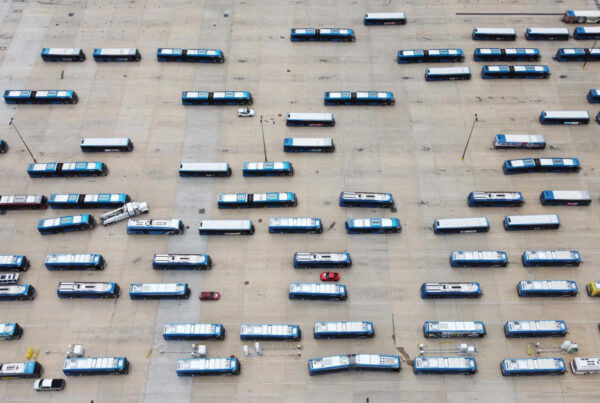Photographer Richard Doherty has lived in the same Dallas neighborhood for 42 years, in the same house, and he’s lovingly photographed his surroundings the whole time.
His new book, “Framing Oak Cliff: A Visual Diary of a Dallas Neighborhood,” features over 100 photographs of Oak Cliff taken over the past four decades.
The photos are accompanied by a history and essays about the neighborhood by three different Texas authors.
Richard Doherty joined the Standard to discuss the book. Listen to the interview above or read the transcript below.
This transcript has been edited lightly for clarity:
Texas Standard: So for listeners who’ve never been, could you tell us about Oak Cliff? What makes it special and what made you want to photograph it?
Richard Doherty: Well, when we moved to Dallas from Baton Rouge, Louisiana, we found Oak Cliff to be the most interesting part of Dallas proper.
It was undeveloped. It was racially and ethnically diverse and beautiful. It’s got unique topography, old-growth trees and old neighborhoods developed after the turn of the century, and it was affordable for us. We just fell in love with it.
My wife worked for South Bend Corporation down in Oak Cliff, and she happened to cut through the neighborhood one day to get home. At that time, we took an apartment in Oak Lawn, and she drove by this little house and she said, “You know, I think we could live there.”
So we went back that same evening, looked at the house, put a bid in and bought it, and here we are 42 years later. Everything just worked for us, and it was a house that we, you know, raised kids in, went to public schools from and thoroughly enjoyed.
Well, you said you moved there, I believe, in 1983 – undeveloped at the time. I imagine things have changed a little since then, though. What changes have you tracked?
Well, it’s been a wild ride for this little south sector of the city. The Bishop Arts District was basically deserted when we moved here. There was a hair salon and a couple of other small businesses and a bunch of artists inhabited the businesses in the strip on Davis and in the neighborhood.
What’s happened in the last few decades is that it’s become a booming retail center. There are great restaurants, coffee shops, bakeries and an amazing variety of things. In addition to that area, the developers have come in and added numerous apartment complexes up and down Fort Worth Avenue and throughout the neighborhood.
The teardowns are epic and people are moving here in droves because, as you know, Dallas is an economic center of Texas, and a lot of jobs are here. They’re providing the apartments they need to house these people.
Of course, as is true with real estate all over the U.S., the prices here have quintupled since we’ve been here. That’s been good for us, but, jeez, it makes it tough for a young couple that’s not got some serious change in their back pocket to buy a home down here. We certainly couldn’t afford to buy a house in our neighborhood now.
Well, that’s interesting to me. There are 116 photos in this book. I imagine over the decades, you must have taken multitudes more than that. Were you looking specifically to show change when you were picking out the photos to include, or did you just find the ones that spoke to you?
I wasn’t really consciously looking for change, but I made photographs of subjects that appealed to me and had a sense of warmth and humanity. I’ve always liked evidence of human habitation, and I like the way people arrange their spaces and the things you find in people’s personal spaces. That’s always been fascinating to me.
That’s harder to see these days because in the time we’ve been here, most of the yards have these giant fences around them now, and you can’t peer into the backyards from alleyways like I was infamous for back in the 80s. I was stopped several times by concerned neighbors that I was casing their property for a potential burglary, but it’s things like that. It’s evidence of life, the way people manipulate their personal space, the uniqueness of that. I’m just interested in the uniqueness of people that somehow strike me as interesting.
I didn’t photograph everyone I came upon, but if I saw someone that looked interesting, I would chat them up and ask them if I could photograph them, and if they agreed, I would. Sometimes the photograph worked and sometimes not, but I always felt like it was worth the investment, and it paid off for me.
Could you talk about a couple of your favorite photos from this book?
Well, gee, what’s my favorite child? I don’t know if it’s my son or my daughter. I’m not quite sure.
Oh, on plate 81, page 101, there’s a portrait of a man in his backyard that I made back in 1984. The second year I was photographing in the neighborhood. This gentleman, I saw him in his front yard. He was in a wheelchair, and he was tooling around, and I was just — what I would do is take off from my house with a camera and a pocket full of film and see what I could find.
Some days I got lucky, some days not, but I saw this fellow in his yard, and I just started talking to him. He seemed like a fascinating guy, and I asked him if we could make his photograph. He said, “Yes, let’s go in the backyard. It’s prettier back there.”
So, he wheeled himself back into the backyard, and I followed. For me, I think I succeeded in making a successful environmental portrait of this man, and it still speaks to me. He’s happy to be photographed. He doesn’t assume any kind of vanity-based pose or posture. It just seems to be an honest, stoic portrait of a human being in his yard. That’s one of my favorite portraits.
I love that. Well, what do you hope people take away from your photos and this book as a whole?
Well, I hope they understand that it’s my personal point of view of a unique social landscape in a part of Dallas that for years was overlooked because it was just not considered the place to go. I just hope the photographs… I hope people take away a sense of humanity and the uniqueness of the social landscape and the personal landscapes that we find in this neighborhood. I hope they enjoy the portraits.
I work within a long tradition of environmental portraiture, which takes the subject for what they are without a lot of fluffing or instruction. I basically tell the people just, you know, let’s make your photograph and let’s just relax your face and see what happens.
It’s an honest type of portraiture. I hope that they take away a unique vision of this site-specific project.













